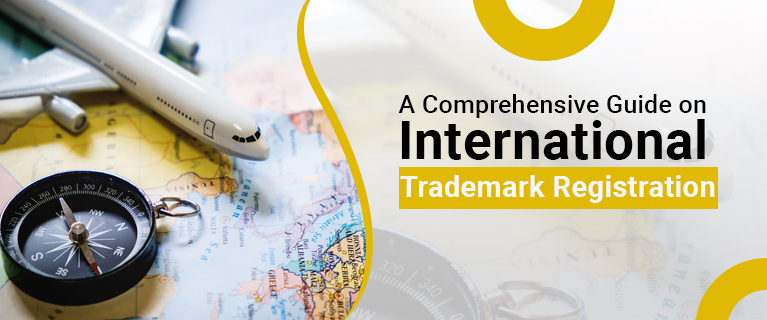Trademark Registration serves as a crucial aspect of protecting a brand’s identity, but it is often limited to specific territories. This means that brand owners must file separate trademark applications for each country where they intend to establish their presence. In this comprehensive overview, we will delve into the intricacies of international trademark registration, exploring both the traditional approach and the streamlined process facilitated by the Madrid Protocol.
Traditional Approach to Trademark Registration:
Trademark registration is typically bound by national boundaries. Each country operates independently, requiring brand owners to navigate diverse legal systems and file separate applications. National trademark registrations have finite validity, providing protection only within the borders of the respective country. Beyond these boundaries, the trademark owner lacks the right to pursue registration.
Madrid Protocol: Simplifying International Trademark Registration
1. Introduction and Purpose:
- Established in 1996, the Madrid Protocol aims to streamline the process of registering a trademark in multiple countries.
- It provides a unified system for international trademark registration.
2. Submitting an International Trademark Application:
- Under the Madrid Protocol, the applicant files an international trademark application with the trademark office of the “place of origin,” which is usually the applicant’s home country.
- For example, if a business operates in India, the Office of the Registrar of Trademarks in India serves as the place of origin.
3. Role of the Office of Origin:
The office of origin handles the trademark application process and registers it with the World Intellectual Property Organisation (WIPO) in Geneva.
4. International Register and WIPO Gazette:
- If the application aligns with standards, the mark, logo, or word is recorded in the International Register.
- Publication takes place in the International Trademark Gazette of WIPO.
5. Certificate of International Registration:
The International Bureau issues a certificate of international trademark registration, notifying countries that signed the Madrid Protocol about the registered trademark.
6. Time Limits and Challenges:
- The Madrid Protocol imposes a strict time limit of 12 and a half years for addressing issues raised by designated offices.
- Challenges raised by individual countries must be addressed within this timeframe.
Process of International Trademark Registration (Indian Context):
- Verify trademark registration status through the national trademark office.
- After the basic trademark application, apply for an International Trademark search, forwarded to WIPO.
Step 2: WIPO Examination:
WIPO reviews the application, and if accepted, the international mark is published in the WIPO Gazette of International Marks.
Step 3: Examination by National Offices:
- National trademark offices examine the application for any errors or issues.
- Publication in the national gazette allows other trademark owners to express concerns.
Step 4: Domestic Procedure:
- The national office has one year to file a provisional rejection if necessary.
- If all is well, the trademark will be registered without delay.
Step 5: Provisional Rejection:
- The national office has one year to file a notification of provisional denial, which can be extended if issues arise.
- The trademark is registered if no objections are raised.
Direct Application for International Trademark Registration:
Documents Required:
- Logo replica (optional)
- Form 48
- Certificate of registration for Udyog Aadhar
- Certificate of incorporation or partnership deed
- Identity of signatory document
- Address on signatory proof
Process of Direct Filing:
Step 1: Apply to the Appropriate National Trademark Office:
- File Form MM2 (or MM-18E in the U.S.) with the national trademark office.
- The application undergoes examination by the national office.
Step 2: Examination by WIPO:
- After approval by the national office, WIPO reviews the application.
- The application is verified for errors before being published in the WIPO Gazette of International Marks.
Step 3: Examination by National Trademark Office of Each Requested Country:
National trademark offices examine the application for any errors or issues.
Step 4: Domestic Procedure:
The application is published in the national gazette for objections from other trademark owners.
The national office has a specific period to file a provisional rejection, and if all is well, the trademark is registered.
Madrid Protocol – A Global Perspective:
Documents Required:
- Business’s or registered user’s proof
- Applicant’s PAN card and Aadhar card
- Logo details
- Registration as an MSME
- Trademark application number or registration certificate (if pending in India)
Process Under Madrid Protocol:
Step 1: Application filing with the assistance of a lawyer
An attorney assists in filing the international trademark application with proper authorization from the applicant. The appropriate stamp duty is paid according to the state.
Step 2: Document Submission:
- A second application in Form MM-18(E) may be necessary for certain countries.
- The international application must be fulfilled in the prescribed Form MM-2(E).
Step 3: Verification:
The registrar ensures that the international application complies with the Madrid Protocol’s requirements. WIPO transfers the application to the relevant foreign government for verification.
Step 4: National Registration:
- International Trademark Registration depends on the continued effectiveness of local registration.
- The WIPO notifies the relevant offices of the selected countries.
Step 5: WIPO Application:
WIPO carefully inspects international applications and informs the office of origin about any abnormalities.
Benefits of International Trademark Registration:
1. Legal Defence:
International Trademark Registration provides legal protection against infringement, making it easier to prove legal rights in court.
2. Business Opportunity:
Trademarks serve as intangible assets, fostering financial prosperity and brand notoriety through licensing agreements.
3. Unique Identity:
Global registration enhances recognition, providing a unique identity for the product on a global scale.
4. Alterations and Renewals:
International trademarks are valid for 10 years and can be easily renewed with the same application form.
5. Safeguarding Brand in Export and Import:
International Trademark Registration protects the brand from imitations, allowing legal action against any violations in import or export activities.
Difference Between Direct Filing and Madrid Protocol:
Direct Filing:
- Trademark registration through direct filing involves submitting separate applications in each individual country where protection is sought.
- The process varies across countries, as each nation has its own set of rules, requirements, and procedures for trademark registration.
- Government filing fees are paid separately in the currency of each country where the application is submitted.
- The application can typically be filed in the domestic language or English, depending on the requirements of the respective country.
Madrid Protocol:
- Under the Madrid Protocol, a single international application can be filed to seek trademark protection in multiple member countries.
- The Madrid system provides a unified procedure, streamlining the application process and making it more efficient for applicants.
- Filing fees are paid in one currency, the Swiss Franc, for the entire international application, reducing administrative complexity.
- The application can be filed in English, French, or Spanish, offering a more standardized approach to language requirements across member countries.
International Trademark Registration Cost:
The processing time for each country may vary, but generally, it does not exceed a year and a half. Upon the expiration of this timeframe without any dismissal, the trademark is considered registered in the relevant country. The cost of registering an international trademark under the Madrid System comprises three main components:
1. Application Fee:
– This fee is fundamental for initiating the registration process of the trademark.
2. Complementary Fees:
These fees are incurred for each contracting party or country where the applicant seeks protection for their mark.
In some instances, complementary fees are the sole individual fees applicable.
3. Supplementary Fees:
Handling fees may be imposed by the office of origin to verify and forward the application to WIPO.
Why Choose LegalRaasta for International Trademark Registration?
LegalRaasta stands as a trusted partner in the realm of international trademark registration, offering a comprehensive suite of services:
- Comprehensive Trademark Search:
Conducting an in-depth search of the trademark database to ensure its uniqueness.
- Expert Drafting and Authorization:
Assisting in the drafting of the authorization letter for the registration process.
- Class Selection Guidance:
Providing expert guidance on selecting the appropriate classes for trademark registration.
- Application Submission and Updates:
Handling the complete application submission process and providing regular updates until the registration is finalized.
Ongoing Support:
Offering continuous support throughout the process, addressing any queries or concerns.
With LegalRaasta, you benefit from a seamless and reliable experience, ensuring that your international trademark registration journey is efficient and legally sound.
Conclusion –
International trademark registration is a multifaceted process crucial for businesses looking to establish a global presence. Whether through the traditional approach of filing directly in individual countries or the streamlined route offered by the Madrid Protocol, the goal remains to safeguard brand identity, ensure legal protection, and capitalize on business opportunities. As the global marketplace continues to evolve, understanding and navigating the intricacies of international trademark registration is essential for businesses aiming to thrive on an international scale.


